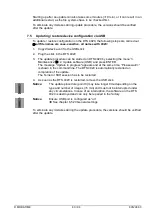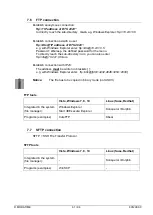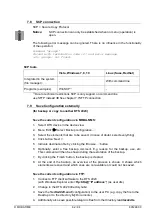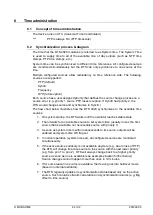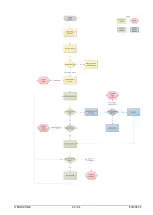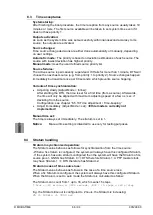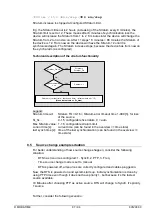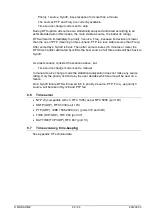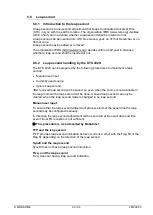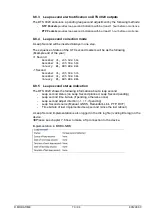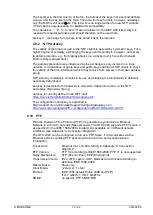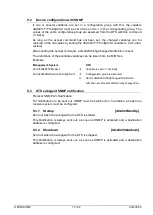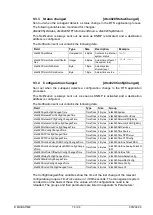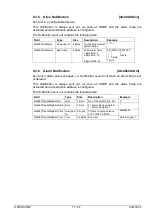
© MOBATIME
72 / 94
801299.00
The key ID is in the first column of the file, the format of the keys in the second defined
column, and the key itself in the third. There are four key formats, however, nowadays
only the MD5 is still used
M. The letter M is no longer written for new NTP variants
(>V4.2) and is only necessary for backwards compatibility.
The characters ' ', '#', '\t', '\n' and '\0' are not allowed in the MD5 ASCII key! Key 0 is
reserved for special purposes and should therefore not be used here.
ntp.keys: man page for ntp.keys to be noted (check the internet)
8.9.2
NTP Autokey
The validity of the time received to the NTP clients is assured by symmetric keys. For a
higher degree of certainty, exchanging the keys used regularly is, however, necessary
to obtain protection, e.g. from replay attacks (i.e. attacks in which recorded network
traffic is simply played back).
The autokey procedure was introduced as the exchange is very involved in a large
network. A combination of group keys and public keys enables all NTP clients to check
the validity of the time information which they receive from servers in their own autokey
group.
NTP Autokey is relatively complex in its use and studying the functionality is definitely
necessary beforehand.
Autokey is descrbied at
http://www.cis.udel.edu/~mills/proto.html
or on the NTP
homepage
http://www.ntp.org
.
Autokey is currently defined in an IETF draft.
https://tools.ietf.org/html/draft-ietf-ntp-autokey-08
The configuration of Autokey is explained in
http://support.ntp.org/bin/view/Support/ConfiguringAutokey
or in
http://www.ntp.org/ntpfaq/NTP-s-config-adv.htm#S-CONFIG-ADV-AUTH
8.10 PTP
With the Precision Time Protocol (PTP) it is possible to synchronize a Ethernet
Network in sub micro seconds (Nanoseconds). The DTS 4020 supports PTP Version 2
as specified in the IEEE 1588-2008 standard. It is available on 3 different network
interfaces (see Appendix “A Connection diagrams”).
The DTS 4020 can be configured to run as a PTP Slave. It communicates via the
Ethernet ports by sending PTP packets with current time and synchronization
information.
Connectors:
Ethernet via 1x RJ45 referring to Appendix “A Connection
diagrams”
PTP Version:
PTP V2 according to IEEE 1588-2008, PTP V1 is not supported
Delay Mechanism:
P2P (Peer-to-Peer), E2E (End-to-End)
Transmission mode:
IPv4, IPv6, Layer2, UDP, Multicast and Unicast according to
definition IEEE 1588-2008
Master-Slave:
Slave only
Clock Mode:
“2 step“ or “1 step”
Profiles:
IEEE 1588 default Profile (E2E and P2P),
ITU-T G8275.1, ITU-T G8275.2
SNMP:
no specific PTP SNMP MIB
Содержание DTS 4020.timebridge
Страница 19: ... MOBATIME 19 94 801299 00 MOBA NMS Tab Overview Frame Time time state ...
Страница 65: ... MOBATIME 65 94 801299 00 ...



